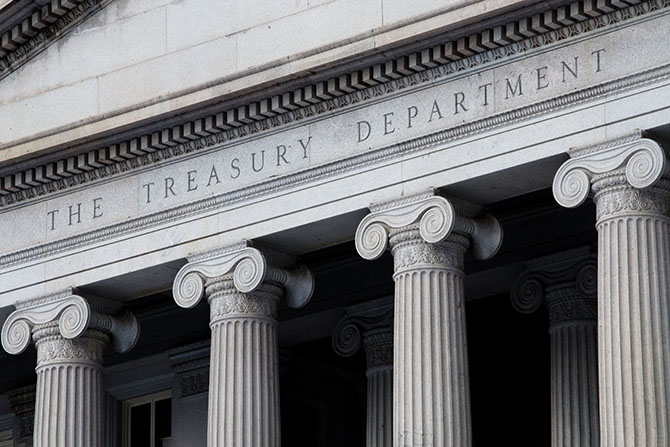As we have navigated the holiday season and hopefully had some time to wrap up some gifts as well as a successful 2023, let’s now spend a few minutes looking into pockets of relative value in the bond market. To get there, we should remind ourselves of the vagaries and ironies of fixed-income investing. In my 35 years of portfolio management participation, I’ve noticed some recurring themes and doctrines, which have both positives and less-than-positives:
- Higher rates = lower prices.
- Selling bonds at a loss, versus a gain, has positive cash flow implications.
- Community banks buy more securities in lower rate periods.
- Higher coupons have less price volatility than lower coupons.
- Yield spreads usually widen when rates fall.
Let’s stay with this last bullet point for a minute. In practice, this means the value of a “risk” asset, which we’re defining here as anything other than a treasury note, will improve less than a similar duration treasury, given a drop in rates. There are several reasons for this reaction. One is that rates fall when investors expect the economy to slow down, so presumably, credit quality will become sketchier. Another is that the lower market rates translate into greater call risk since the likelihood of a bond ending up “in the money” to be redeemed increases.
Usually, Not Always
The corollary to the preceding paragraph is that spreads narrow as rates rise. In the year just completed, in which Treasury yields fell thanks to a fourth-quarter rally, we saw an amazingly diverse set of returns for the various bond sectors that community banks like.
Most of the mortgage sector, for example, saw their spreads widen. The genesis of the wider-spreads/higher treasuries dynamic was, of course, the demise of several large banks beginning in March. Silicon Valley Bank, in particular, with its $200 billion-plus of mortgage-backed securities (MBS), caused that sector to have some indigestion through the summer as the FDIC’s bridge bank gradually disposed of the assets. Still, yield spreads were wider at the end of the year, partly the result of depositories in general not purchasing many bonds of any color or flavor.
The MBS sector, in this column, includes traditional fixed-rate pass-throughs, collateralized mortgage obligations (CMOs) and even adjustable rate pools (ARMs). In the counter-intuitive world of bond investing, mortgage pools’ underperformance in 2023 would seem to indicate a pocket of value heading into 2024.
Munis for the Bid?
You may ask, “If MBS are cheap, what’s expensive?” On the other side of the past-performance spectrum are municipal securities. The muni market has other machinations going on that resulted in relatively low yields and spreads by the end of last year.
Demand for munis is determined not so much by institutional investors but by the retail sector. Well over 60% of existing muni bonds are owned by individuals either directly or through municipal bond funds. Appetite for retail munis has generally grown over time as baby boomers retire, and except for temporary “headline” sell-offs such as those related defaults by Detroit or Puerto Rico some years ago, demand has been steady and growing. Recent credit-quality performance in the sector has been solid.
The supply side of the municipal market is another story. According to the Federal Reserve, the entire muni market grew by only $50 billion between 2010 and 2022, or barely more than 1%. More recently, in 2023, there were a number of issues postponed into the future, presumably to chase lower interest rates. The amount of new paper issued in 2023 was over 20% less than in 2021. While some of that was due to fewer calls being exercised, the continued supply shortage has pulled down tax-equivalent yields for institutional buyers, including community banks, into “through the curve” levels. For maturities out to 10 years, investment-grade munis could yield up to 50 basis points (.50%) less than benchmark treasuries.
Cogito, Ergo I Swap?
The previous two sections would seem to suggest a tidy bond swap strategy. The first step in any simultaneous purchase and sale is to find the most efficient securities to sell. Those would be the ones with the lowest return to the buyer, otherwise known as a “take-out yield.” Bonds that have lower returns than treasuries are hard to come by, but that’s exactly where shorter municipals were trading at the end of 2023.
Securities to replace them? I’d start with some kind of MBS. Recently, strategists from Stifel have been suggesting “hybrid ARMs,” which have reasonable yields today and the possibility of maintaining them in the future even if rates fall. Most of them come with offering prices below par, which is another rarity.
Ultimately, the theme of this column is that opportunities are abound for your bond portfolio at the start of the year. Some sectors look historically expensive, while others seem to offer uncommon value. Acting early in the year can get momentum started for a prosperous 2024.
Jim Reber (jreber@icbasecurities.com) is president and CEO of ICBA Securities, ICBA’s institutional, fixed-income broker-dealer for community banks.
Upcoming Webinars
ICBA Securities and its exclusive broker Stifel will present 16 webinars throughout 2024. There will be several tracks, including balance sheet management, enterprise risk and economic outlooks. We will again offer CPE credits for these events. Be on the lookout for announcements.










